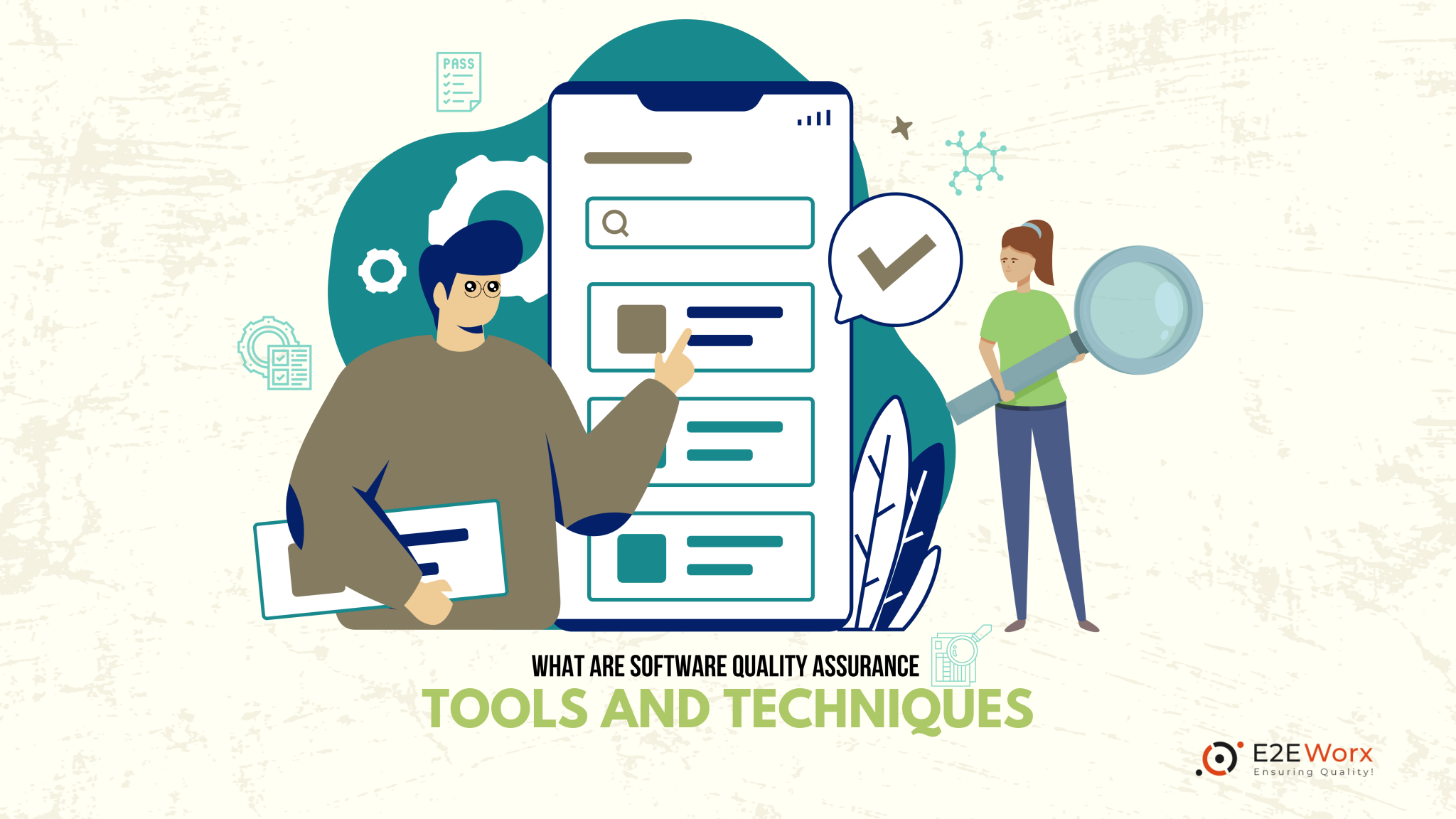
Software Quality Assurance Tools And Techniques: (SQA) is described as a process that assures the quality standards of software products. To accomplish the expected, it observes several software engineering techniques and methodologies.
It is a process that drives the entire software development life cycle (SDLC), along with proper management, coding, and testing. A Software Quality Assurance team not just tests the application but also assures that the whole development process runs smoothly. The fortune of this process is to deliver a high-quality application that satisfies all the requirements of the end-users.
Why tools and techniques?
QA mutually manages besides controls the management goals while working to meet the client’s needs through the application. By means of this, both the client and the customer sense that they are receiving a good product that will keep improving according to the latest and dynamic technology era.
For the sake of maintaining the high standards of any organization, there is a need to use the latest Software Quality Assurance (SQA) tools and techniques. Before understanding QA tools, it is essential to comprehend their significance.
Importance of using the latest QA Tools and Techniques
While constructing any hardware product, there is always a need for tools. Since there are many complex processes during the manufacturing phase, concluding which isn’t possible without tools. Identically, not utilizing the latest and contemporary approaches can’t lead any product to meet the quality standards.
As follows, software applications also obey the same rule. For any software that desires to create revolutionary impacts in the industry, there is always a need for the latest tools and techniques.
Software Quality Assurance tools and Techniques
Software Quality Assurance is a complete and concise process. Just like other applications that provide services to their users, Quality Assurance also delivers Quality Assurance Services to the clients.
We may state that the QA team also needs to match the market standards by providing high-quality services. For the sake of this, QA organizations utilize the latest QA trends and Tools. These Quality Assurance tools and techniques assist in monitoring and controlling the quality initiatives of the organizations.
A few of the most commonly used tools and techniques in SQA are listed below
-
- Test automation tool: Used in automating testing processes, such as creating and executing tests. In addition to Selenium and Appium, JMeter is also an example.
- Testing tools for performance: These tools measure software product performance, such as response time and resource utilization. LoadRunner and Apache JMeter are examples of it.
- Code review tools: SonarQube and Code Climate are the tools that help in reviewing the dev code and detecting defects and vulnerabilities.
- Static analysis tools: These tools analyze the quality of software code and determine its working. Examples include PMD and find Bugs.
- Continuous integration/continuous delivery (CI/CD) tools: CI/CD tools are useful where code changes like building, testing, and deploying need to be automated. In addition to Jenkins and GitLab CI/CD is an example.
- Test management tools: To manage the testing process test management tools have been utilized. These tools help in the testing process, including test case creation, execution, and defect tracking. Examples include TestRail and Zephyr.
- Requirements management tools: IBM Rational DOORS and Jama Software are the tools that help in Requirements management. These tools ensure that the gathered requirements meet the software product.
- Version control tools: These tools manage software code changes and versions. Examples include Git and SVN.
- Agile methodologies: Agile methodologies prioritize collaboration, continuous feedback, and customer satisfaction. It promotes quality by ensuring that the software product is regularly tested and delivered in small, incremental releases.
Conclusion
Quality Assurance is not just highlighting the defects in any software application. But it’s a precise and complete method that also needs revolution over time.
Consequently, QA tools and techniques have attributes that help in problem-solving in a specific testing phase. To choose the right SQA tools and techniques for the QA team and product, one should consider the clear needs and requirements of a specific software project.
The tools should also be based on their cost, ease of use, and effectiveness in meeting the goals. It’s important to regularly evaluate and refine SQA processes and tools to ensure that they are effective and efficient.
From all the discussion, we may state that beyond any doubt, QA also needs the latest trends and tools to provide the finest services to clients. Besides being economical in this revolutionary era.
Visit: Software Quality Assurance: Manual Vs Automated Testing – E2EWorx

One Response